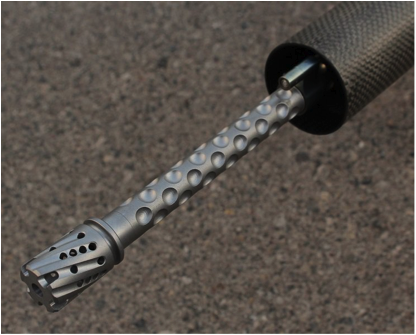Defining Different Muzzle Devices
March 11 2016
One of the most common modifications and enhancements to firearms on the market today are muzzle devices. In general terms, a "Muzzle Device" is simply a CNC-machined product that gets added to the end of the barrel or muzzle of a firearm in order to accomplish a specific task and come in many variations. A few objectives these devices try to enhance and accommodate for are:
- Felt Recoil: meaning the amount of push-back the firearm is transferring to the shooter upon firing
- Muzzle Flip: some firearms tend to send the muzzle up in a sharp jolt when fired, generating the twisting feeling felt by the shooter usually resulting in what's referred to as "muzzle flip".
- Muzzle Flash: when you traditionally shoot your firearm, the amount of powder in the cartridge that burns to create the "gas" for acceleration of the bullet is very rarely completely burned or evaporates within the barrel. As a result, once the bullet leaves the muzzle, the remaining powder tries to continue to burn and generally does so outside the muzzle. This burning powder creates a small fireball that is bright and is referred to as "muzzle flash".
- Sound Suppression: When a firearm is fired, the rapidly expanding gases not only create thrust and acceleration on the bullet, but they also create an acoustic wave that creates the well-known "bang" of a gunshot. There are muzzle devices that specifically try to reduce the decibels of this element.
COMPENSATORS
Compensators are devices that essentially channel and direct some of the escaping gases that trail after the bullet upward, creating a downward push on the barrel. They function as a filter and the main objective here is how it helps to reduce muzzle flip, always making it faster to reacquire your target, allow for a faster follow on the next shot and providing stability of the firearm all the while ensuring trigger control.
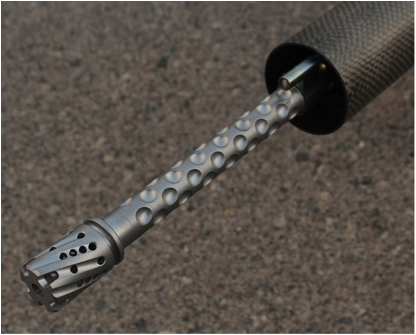
FLASH SUPPRESSORS
Also referred to as Flash Adapters, Flash Hiders or even Flash Guards, these devices usually consist of prongs that protrude forward to allow the excess powder from the shot to burn off in various methods that won't be as visibly bright as on traditional & basic muzzle devices. A common misconception to remember is most individuals have been lead to believe that this is done to try and suppress a shooters position when firing, but in reality, the main objective as intended for the military, was to decrease the visible flash for the shooter. This functionality will allow someone to operate more proficiently in darker environments (including night-time), providing advantages in low light areas all the while preventing the usual blinding of the shooter when one discharges with basic muzzle devices. Please note that this does not mean that a muzzle with a "flash suppressor" will help reduce the visible flash, preventing others from seeing it, an important factor to always consider!
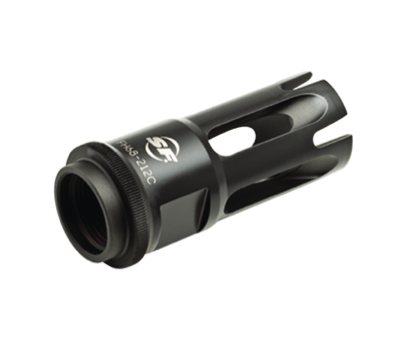
MUZZLE BRAKES
Similar in many ways to a compensator, a muzzle brake redirects the gases expended at the shot backwards, creating a forward style thrust on the firearm and helping to counteract the backward thrust from the shot itself. This translates in less felt recoil on the shooter. There is a very distinctive downside to many muzzle brakes however. Since a portion of the energy is being redirected from the muzzle back towards the shooter, a noticeable increase in the audible gunshot decibels is experienced by the shooter. However, with proper hearing protection, this is not something that creates any more discomfort to your ears than a regular gunshot would!
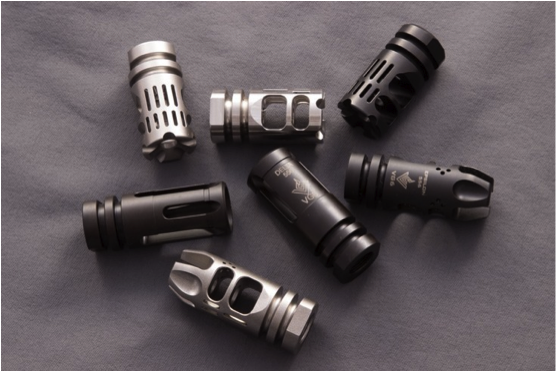
SUPPRESSORS
These devices, more often than not referred to as "Cans", are designed primarily to help reduce the decibels generated from the acoustic wave experienced from shooting & discharging a firearm. While many different manufacturer's and designs approach this with different methods, there is a distinct element that is accompanied with these devices. Since a suppressor needs to redirect gases many times over (most comparable to the way a muffler operates on an automobile), it encounters the same drawback of producing extreme amounts of heat. Suppressors get hot substantially faster than a normal barrel does and many of the modern designs focus on shapes that will maximize surface area in order to help cool down faster (similar in theory to cross-drilled rotors on automobiles).
Note that Suppressors are also commonly, but inaccurately, referred to as "silencers". However, if we think to our muffler analogy above, just as with a vehicle, you can significantly quiet an engine but never truly silence it! The same goes for firearm Suppressors, while they can help to drastically decrease the decibels of a shot, they cannot entirely silence them.
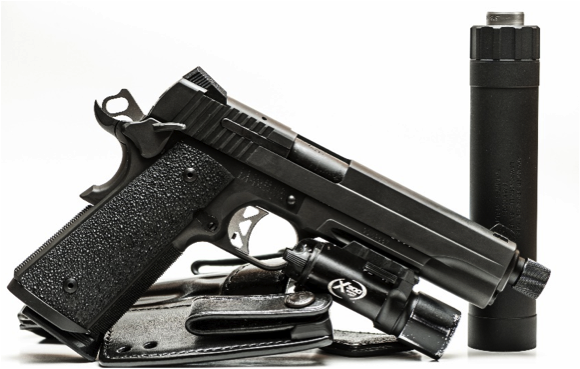
In many cases, a single device can be designed and engineered to try and serve for the multiple versions defined and described above. For example, there are "Muzzle Brakes" & "Compensators" that additionally try to decrease the amount of flash from the shot incorporating two (2) functions into one device. So the next question obviously becomes which one should be purchased? Well, if we simply try to think about the end results and the intended use for the firearm, then we can start to narrow the field of available and viable options. Ultimately though, it simply comes down to the fact of what one feels will work best and service those needs.
For example, if you add a muzzle brake to your firearm, the reduction and end result of felt recoil might make it more comfortable to shoot, but if there's ever the potential that one might need to use the firearm without hearing protection, then there may always be a higher risk of potentially damaging one's hearing with the increased amount of decibels being directed at the shooter. Perhaps one works in team elements, within a very close proximity where the directed gases might be incredibly uncomfortable for a team member standing close to the shooter? Maybe one works primarily in areas of low light and requires a flash suppressor to help maintain vision in the dark? Whatever the needs, consider and think about these key-points and elements as they address what one should be able to sort through to assist in making the right decision and commitment based on intended use.
Recents Posts
September 26 2018
Train Like You Fight with a Good Set of Ear Plugs
July 04 2018
A Holster by Any Other Name is Still a Holster
June 03 2018
DNA Tactical Self-Defense Tools
May 15 2018
A Guide to Handgun Holsters
April 19 2018
Waistband v. Shoulder v. Ankle: The Great Holster Debate
April 05 2018
Essential Gear Components for Disaster Survival
March 22 2018
Protecting Your Eyes on the Range is Plain Common Sense
January 24 2018
Customize Your Gear to Win the Fight of Your Life
January 19 2018
How to Choose A Hand-Held Light
January 11 2018
How to Choose a Hands-Free Light
January 08 2018
The Right Holster for Everyday Carry? You are Your Own Expert
December 11 2017
Emergency Outdoors Medicine and Rescue
December 10 2017
Cordage and Accessories for Survival and Outdoors
December 03 2017
Choosing and Using Survival Knives
November 25 2017
The First Priority of Survival
